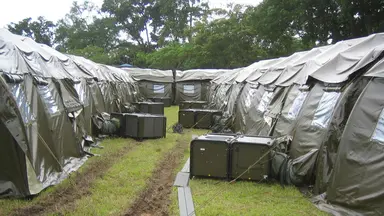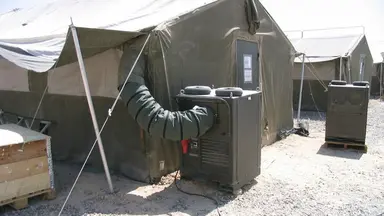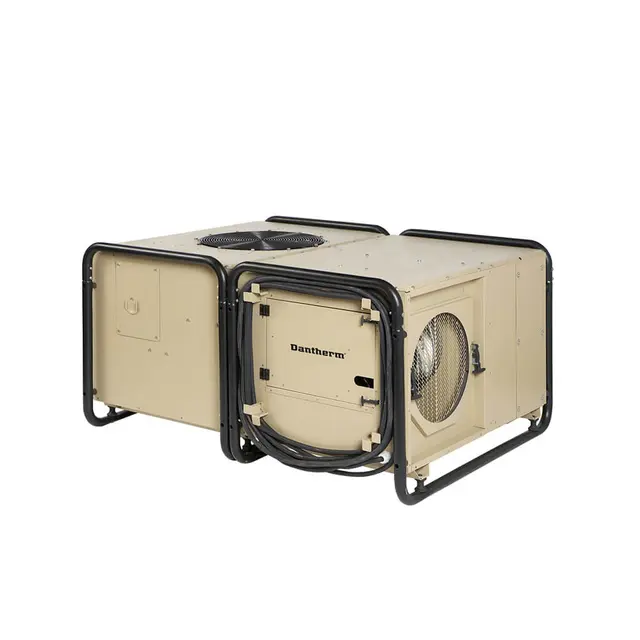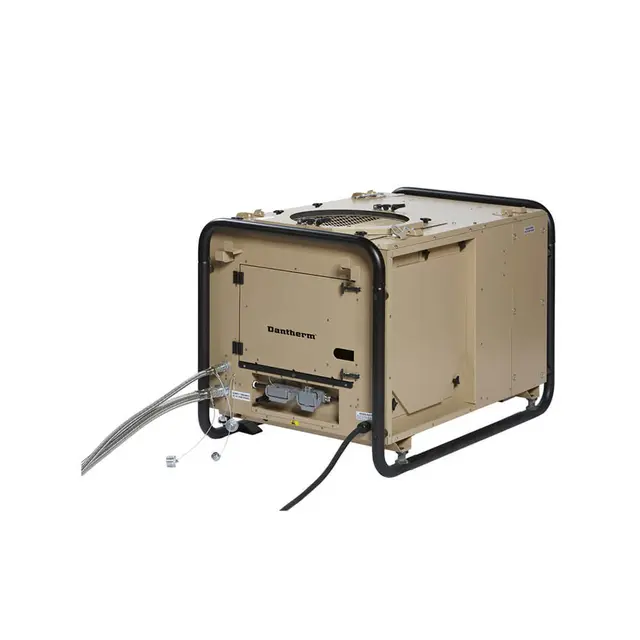Controlling critical environments with HEPA-filtered air-conditioning

- Home
- Insights
- Air cleaning insights
- Controlling critical environments with HEPA-filtered air-conditioning
In this article, we explain how High Efficiency Particulate Arresting (HEPA) filters help scientists across Europe conduct vital work in safe environments. You’ll discover why air filtration is so important for scientific research and how Dantherm can bring cool, clean air to your laboratory.
Laboratories facilitate varied fields of scientific research, testing and development, and as part of their day-to-day work, lab technicians are likely to be conducting experiments that involve dangerous chemicals, pathogens and biological matter. In addition to taking strict measures to protect themselves and regularly disinfecting surfaces, being able to remove contaminants from the atmosphere is vital for their own wellbeing, the reliability of their data and the safety of the public.
In a well-maintained laboratory, heating, ventilation and air-conditioning (HVAC) systems used to regulate critical environments are often fitted with H13 or H14 HEPA filters. The two highest grade filters available, these are generally 99.95% effective in capturing particles and organisms as small as 0.3 microns; a measurement that is 1 millionth of a metre in diameter and invisible to the naked eye. To put that into context, some of the particles that HEPA filters can capture include:
Smoke (0.01 to 1 micron)
Dust (0.05 to 100 microns
Bacteria (0.35 to 10 microns)
Dust Mite Debris (0.5 to 50 microns)
Spores from plants (6 to 100 microns)
Human Hair (70 to 100 microns)
Mould (20 to 200 microns)
How are HEPA filters used in science?
HEPA filters are part of the unique climate control setups for labs working across a wide range of sectors, including:
Medicine
Due to the nature of their job, medical practitioners and researchers work in close proximity to microbes and other dangerous pathogens on a daily basis.
While conducting research for vaccines or analysing patient tissue samples, harmful particles that infect the atmosphere need to be filtered from the air in order to maintain a safe working environment; for their own wellbeing and for public health.
Food science
During the research and development stages of food and beverage production, it is important to maintain sanitised conditions in laboratories and testing facilities. During the mixing of ingredients, quality control and standardisation, there is a high risk of chemical contamination or bacterial outbreak due to improper handling.
In the interests of consumer safety, HEPA filtration is used to prevent airborne microbes and harmful particles, including mould spores, from contaminating the atmosphere and reaching products.
Environmental research
To better understand the pollutants affecting the natural world, environmental researchers analyse biological and chemical substances found in soil, gas and water.
In laboratory settings, HEPA filters prevent samples from becoming more contaminated, or releasing contaminants into other environments. A failure to do so will skew data and render results invalid.
How do HEPA filters work?
First developed in the 1940s by nuclear scientists to contain the spread of radioactive particles, HEPA filtration is still one of the most effective and widely-used methods of cleaning the air in laboratories. Understanding how it works can be broken down into three basic principles:
#1 Impact
As air flows through the filter, larger particles in the air (those around 0.5 microns) have enough inertia to continue through changes in airflow around the fibres in the filter and stick to the filter media.
#2 Interception
When particles are not heavy enough to maintain their own velocity, but not light enough to diffuse in the atmosphere, they will follow the airflow as it bends through the fibre spaces and are captured when they touch a fibre.
#3 Diffusion
Smaller particles (less than 0.1 microns) are so tiny that, instead of flowing through the atmosphere, they diffuse through the air and are more likely to become trapped when they collide with the fibres.
Combine clean air with climate control
Achieving air filtration efficiency of 99.95% – 99.995% (>0.3 μm particle diameter size), Dantherm’s H13 and H14 HEPA filters are compatible with the AC-M18 air-conditioning range.

To find out more about the best option for your facilities, simply fill out the contact form below and our team will be in touch.
Related products
Featured insights

Why our cooling solutions are the top choice for military and humanitarian aid personnel

Controlling climates in camps and field hospitals

Why Dantherm heaters are the first choice for the front lines
Need help with choosing the right solution? Our team of over 100 climate control experts can assist.
You can also reach out or join the discussion on our Social Media. Check out our LinkedIn page.

